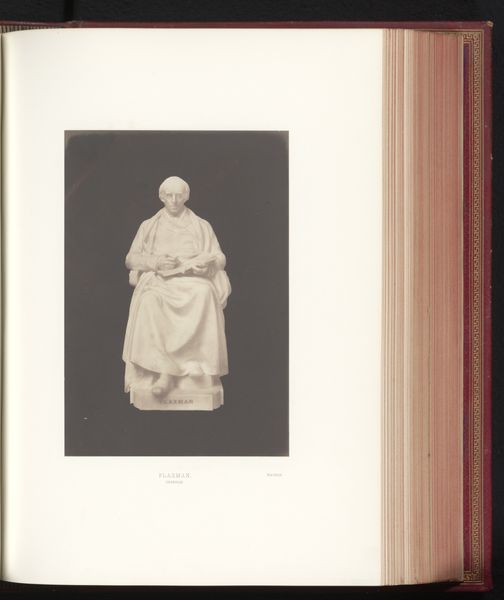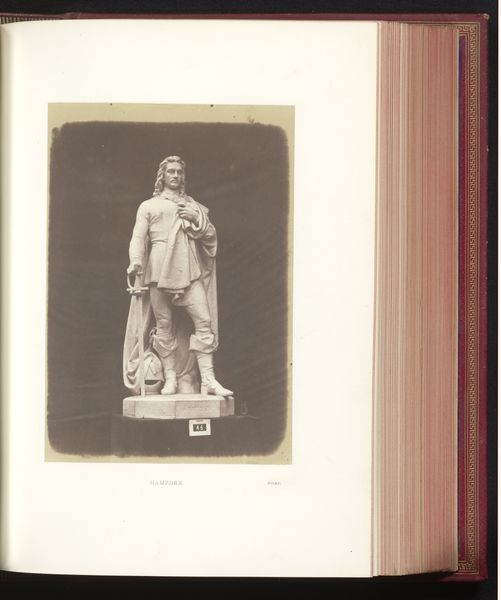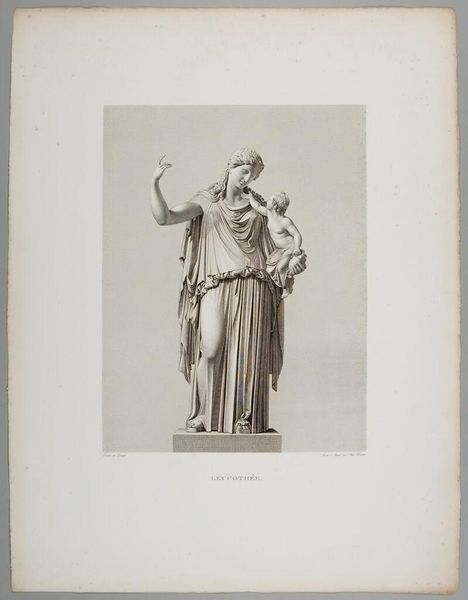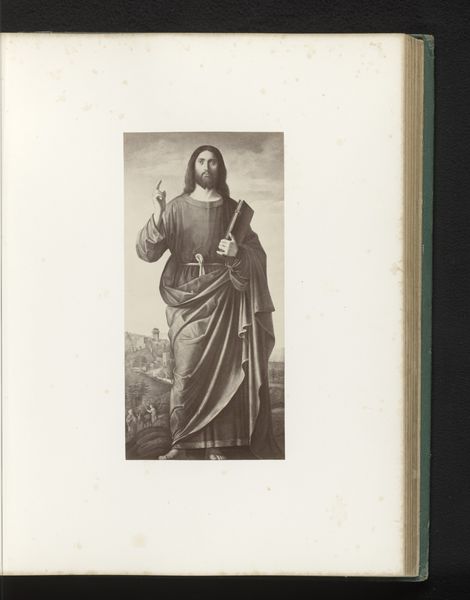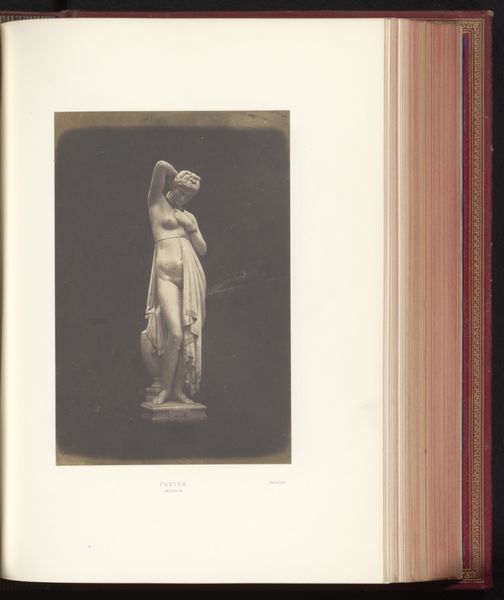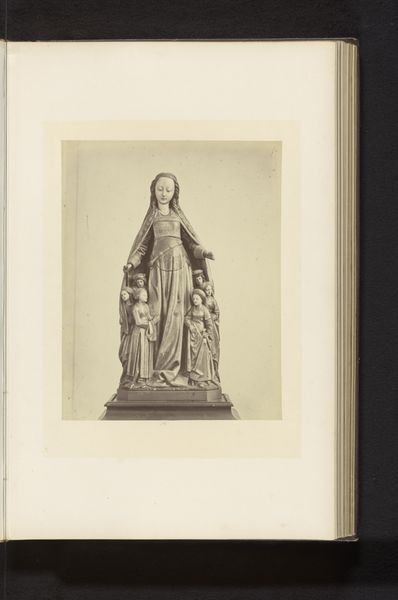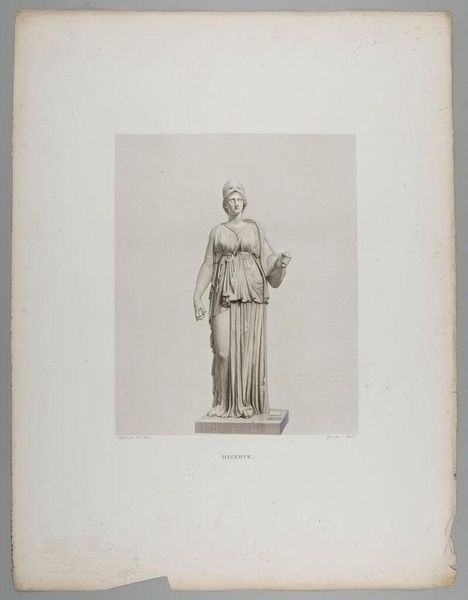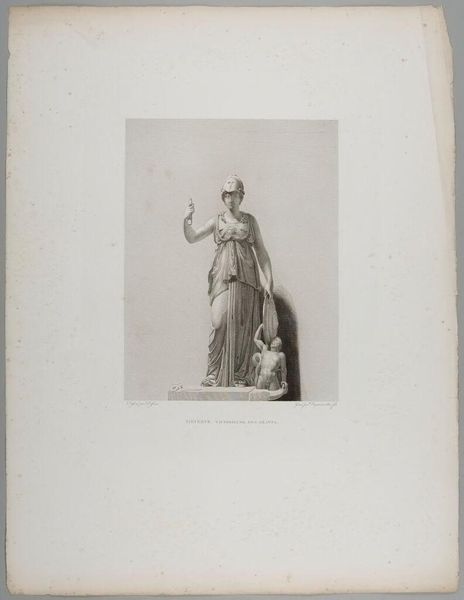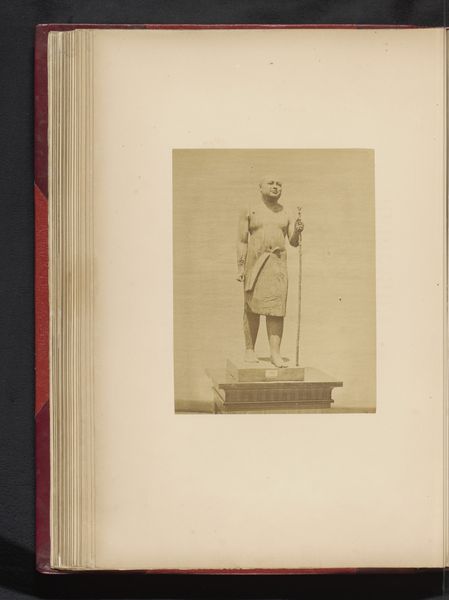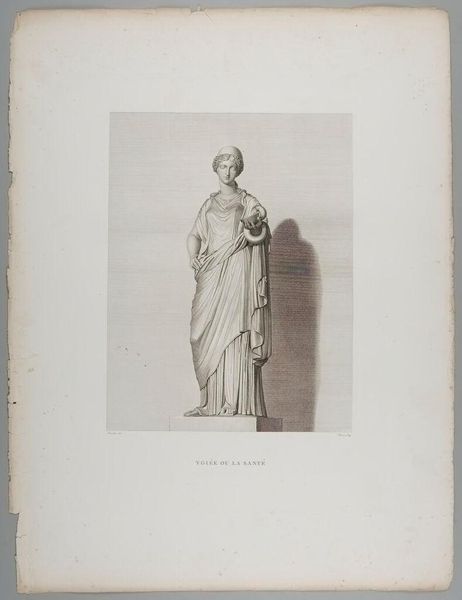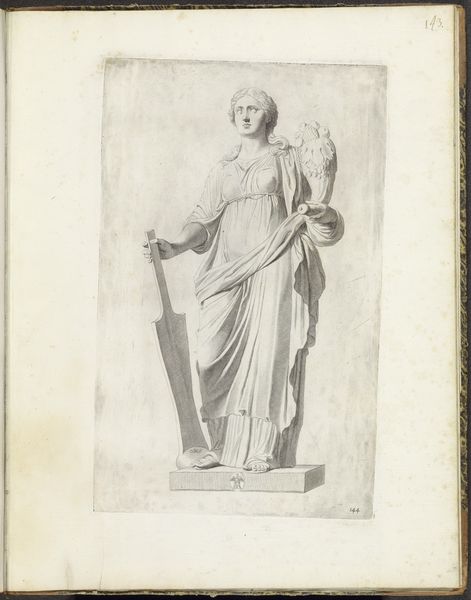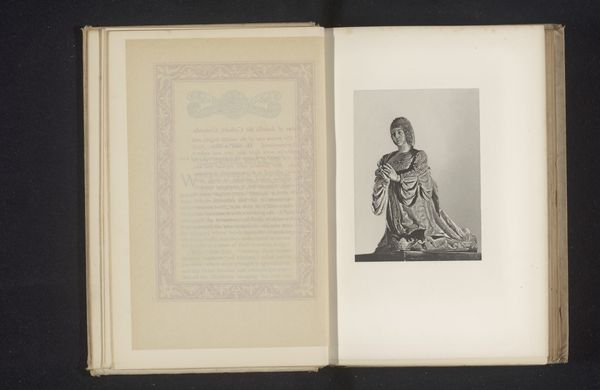
Standbeeld van Libuše door Ferdinand von Miller, tentoongesteld op de Great Exhibition of the Works of Industry of All Nations van 1851 in Londen 1851
0:00
0:00
photography, sculpture
#
portrait
#
statue
#
classical-realism
#
photography
#
sculpture
#
history-painting
Dimensions: height 214 mm, width 153 mm
Copyright: Rijks Museum: Open Domain
Curator: This photograph documents Ferdinand von Miller’s sculpture of Libuše, displayed at the Great Exhibition in London, 1851. Editor: There’s something haunting about this image. It's as if this photographic print attempts to breathe life into cold stone, yet the lack of color reinforces the statue’s immobility. Curator: Libuše is a figure drawn from Bohemian legends, a wise ruler who prophesied the founding of Prague. The statue carries heavy symbolic weight—representing national identity and a yearning for strong, enlightened leadership. Editor: I'm curious about the materiality. Looking closely, the drape of her gown suggests that it could be cast from bronze. You know, for these massive exhibitions they were all about showing off the latest technological innovations. I bet this sculpture represented cutting-edge capabilities in metal casting. Curator: Precisely! And look at her gesture, hand resting confidently on her hip, head held high; the sculptor certainly wanted to portray her strength and vision, referencing classical ideals, almost godlike in her serene command. Editor: The choice of Libuše is also intriguing. The exhibition was a huge celebration of industry and global commerce, and choosing a female figure, even a mythical one, feels quietly radical for that time, especially one connected with the founding of a city. A symbol of female sovereignty enshrined in material. Curator: Indeed. Her presence is about more than just sovereignty, but also speaks of continuity—the desire to root the present in a heroic and perhaps even romanticized past. Libuše, here, becomes the timeless mother of a nation, eternally watching over her people. Editor: Seeing the original materials and understanding the process, brings me closer to appreciating the piece. To imagine people, potentially, gathering round, amazed at the feat of this sculpture, especially within such an incredible exhibition space. Curator: The past constantly echoes into the present, doesn’t it? We interpret Libuše through our contemporary lenses, her image evolving with each new generation. Editor: Exactly. We are always trying to reshape our history into our ideals. That piece allows insight into both this effort, and the innovations involved.
Comments
No comments
Be the first to comment and join the conversation on the ultimate creative platform.
